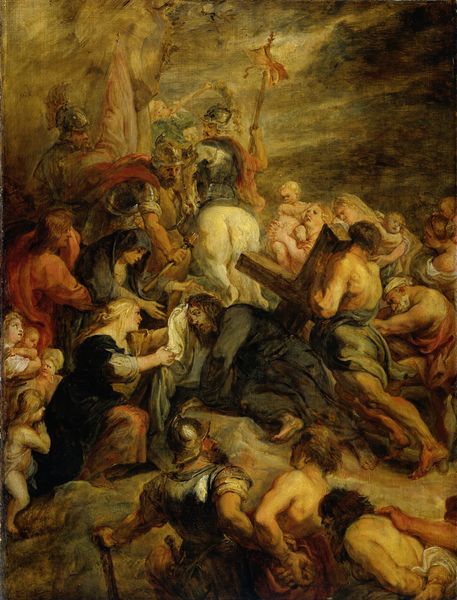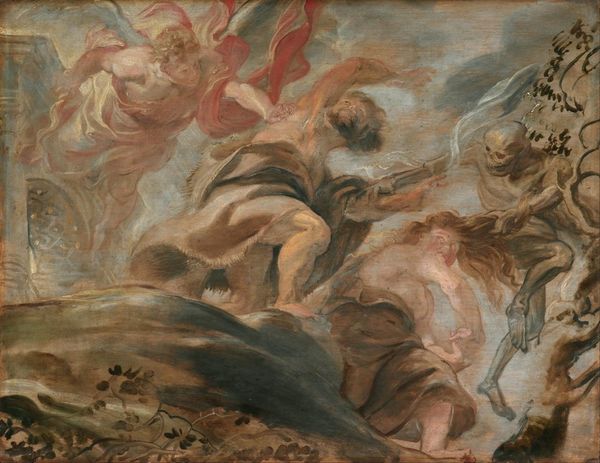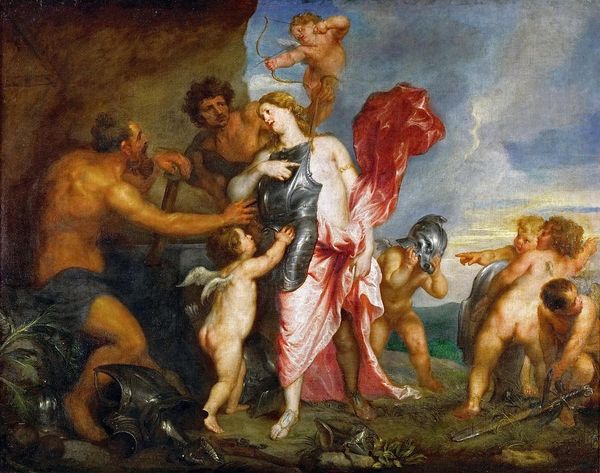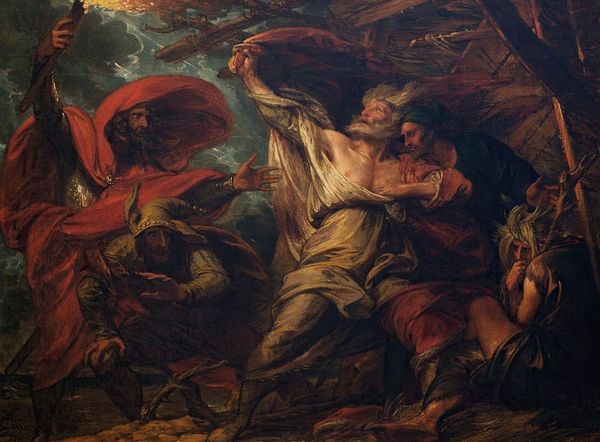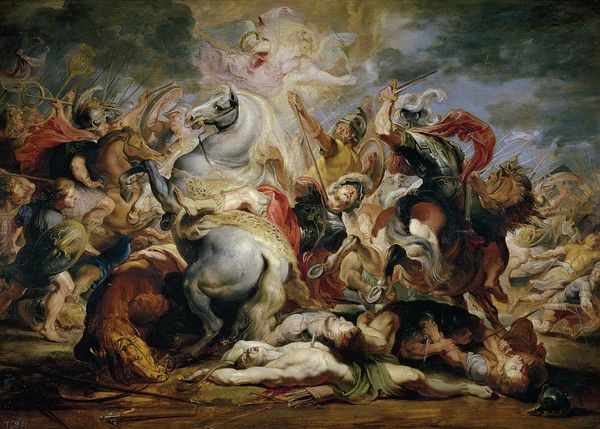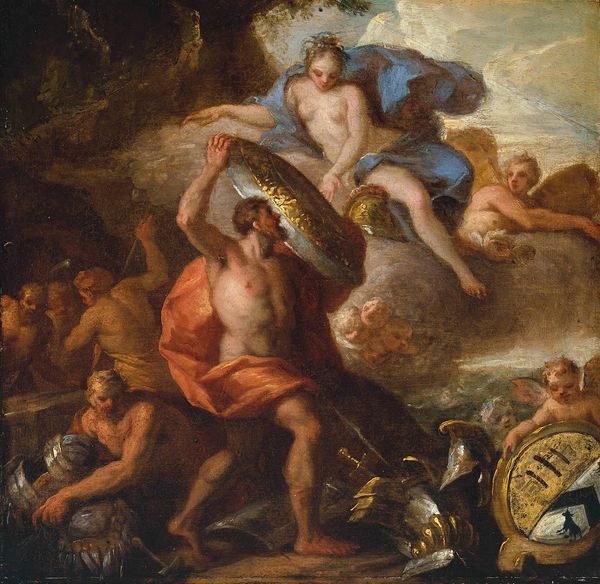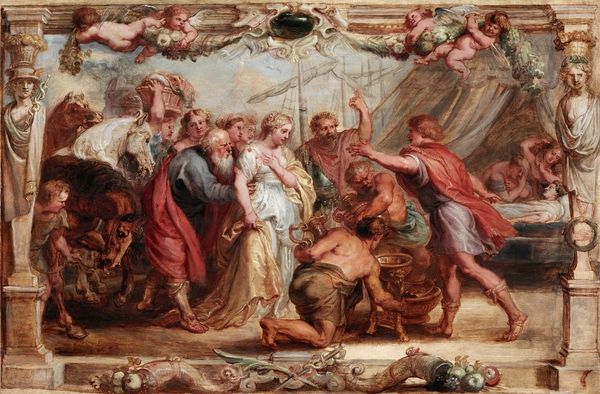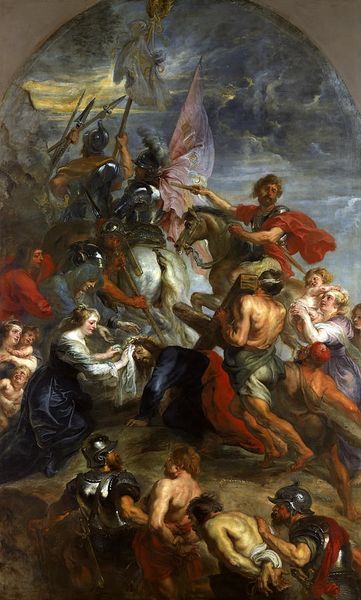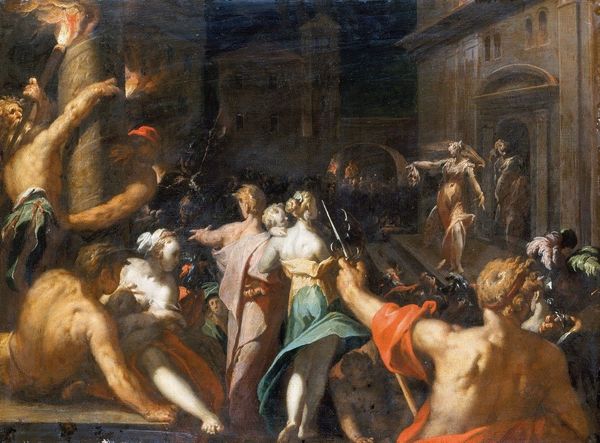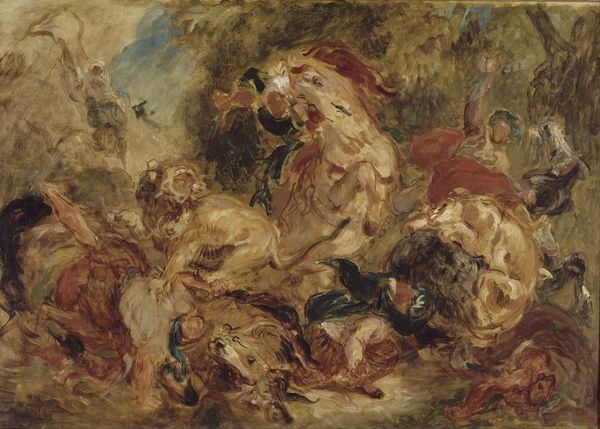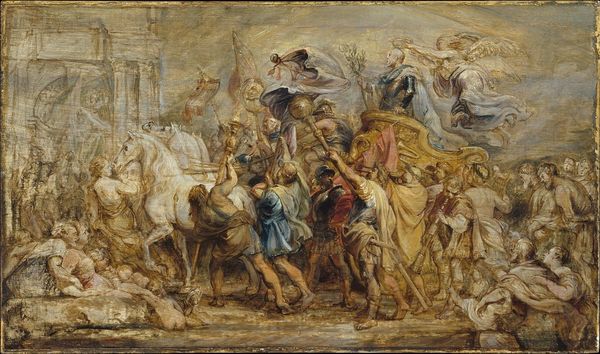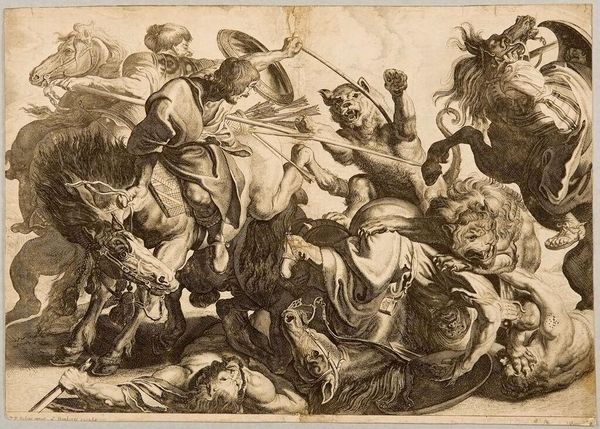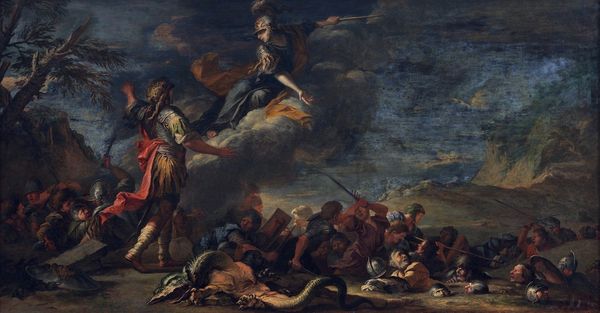
Copyright: Public Domain: Artvee
Editor: So, here we have Rubens' "The Triumph of Henry IV," a 17th-century oil painting. It’s a pretty chaotic scene, lots of movement, and there's this distinct air of glorification...almost propaganda-like. What do you see in it? Curator: You’ve touched on something key: the political function of art. Rubens wasn't simply depicting a triumph; he was crafting a specific image of Henri IV for public consumption. Think about the context. Henri IV, a controversial figure, needed to solidify his rule and legitimize his dynasty. Rubens uses classical allegory – Victory crowning the king, the defeated foes underfoot – to link Henri IV to past emperors and assert his power as divinely sanctioned. Editor: So, it's less about historical accuracy and more about image management? Curator: Precisely. This painting served as visual rhetoric. Consider its intended audience: the French court, visiting dignitaries, even the broader populace through engravings. It's a carefully constructed narrative, downplaying the complexities of Henri IV's reign. It glosses over the religious conflicts and focuses on an image of unified, divinely blessed rule. Do you notice anything specific about who he has underfoot? Editor: Now that you mention it, there's armor strewn about; he seems to be literally stepping on defeated soldiers or figures of war? Curator: It's important to remember how these images shape public perception. What kind of lasting effect could repeated images of glorious victory have? How might this idealized vision affect future political decisions and cultural memory? Editor: It's fascinating to think about art as a tool for shaping public opinion. I usually focus on the aesthetic qualities, but understanding the socio-political context really deepens my understanding. Curator: Exactly! Art is never created in a vacuum. Examining its social function opens up a whole new world of interpretation.
Comments
No comments
Be the first to comment and join the conversation on the ultimate creative platform.
